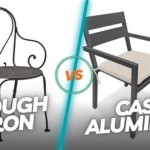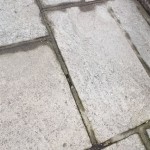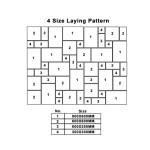Concrete Patio Paver Border: Enhancing Aesthetics and Functionality
Concrete patio pavers offer a versatile and durable solution for creating outdoor living spaces. A crucial element in the overall design and longevity of a paver patio is the border. The border, often constructed with different pavers or materials, serves multiple purposes, contributing to both the aesthetic appeal and structural integrity of the patio. This article will explore the various aspects of concrete patio paver borders, from their functional benefits to design considerations and installation techniques.
Functional Advantages of a Paver Border
A well-designed and properly installed border provides several functional advantages that extend beyond mere aesthetics. These benefits contribute significantly to the overall performance and lifespan of the patio.
Edge Restraint: The primary function of a paver border is to provide edge restraint for the main paver field. Without a solid border, the outer pavers are susceptible to shifting and spreading over time, leading to an uneven and unstable surface. The border acts as a physical barrier, preventing lateral movement of the pavers caused by foot traffic, weather fluctuations, and soil erosion. This is particularly important in areas with heavy use or unstable soil conditions.
Weed Control: A properly constructed border can also contribute to weed control around the perimeter of the patio. By creating a defined edge with tight joints, the border minimizes the space for weeds to germinate and grow between the pavers and surrounding landscaping. This reduces the need for frequent weeding and helps maintain a clean and tidy appearance. The effectiveness of weed control is enhanced when the border is installed with a solid base and joint filler.
Drainage Management: The border can be strategically designed to improve drainage around the patio. By incorporating a slight slope or using permeable paver materials for the border, water can be effectively channeled away from the patio surface, preventing water damage and reducing the risk of standing water. This is especially important in areas with heavy rainfall or poor drainage.
Protection of In-Ground Features: A paver border can define the edge of the patio in relation to in-ground features like sprinkler systems, landscape lighting, or garden beds. By creating a subtle physical boundary, the border protects these features from damage caused by lawnmowers, foot traffic, or general wear and tear. The border also serves as a visual cue, alerting individuals to the presence of these features, further reducing the risk of accidental damage.
Design Considerations for Paver Borders
The design of the paver border is crucial for achieving the desired aesthetic effect and complementing the overall style of the patio. Several factors should be considered when selecting the materials, color, pattern, and size of the border.
Material Selection: The choice of border material is a significant design consideration. While concrete pavers are the most common choice, other materials such as natural stone, brick, or even metal edging can be used to create a unique and distinctive look. The selected material should be durable, weather-resistant, and compatible with the main paver field. The texture and color of the border material should complement the pavers and surrounding landscape.
Color Contrast: The color of the border can significantly impact the overall appearance of the patio. A contrasting color can create a bold and defined edge, highlighting the shape and size of the patio. Alternatively, a color that blends seamlessly with the pavers can create a more subtle and integrated look. Consider the existing color scheme of the house and landscape when selecting the border color.
Pattern and Layout: The pattern and layout of the border pavers can add visual interest and enhance the design. Common border patterns include soldier courses (pavers laid end-to-end), sailor courses (pavers laid side-by-side), and running bond patterns. More intricate patterns can be created by combining different paver shapes and sizes. The layout should be carefully planned to ensure a consistent and visually appealing appearance.
Size and Proportion: The size and proportion of the border should be proportionate to the size of the patio. A narrow border may be insufficient to provide adequate edge restraint, while an overly wide border may overwhelm the main paver field. The ideal width of the border depends on the size of the patio and the type of paver used. A common rule of thumb is to use a border that is at least two pavers wide or approximately 6 to 12 inches.
Style and Aesthetics: The style and aesthetics of the border should complement the overall design of the house and landscape. A modern patio may benefit from a clean and minimalist border, while a traditional patio may be enhanced by a more ornate and decorative border. Consider the architectural style of the house, the design of the landscape, and the desired aesthetic effect when selecting the border style.
Installation Techniques for a Durable Paver Border
Proper installation is essential for ensuring the long-term durability and performance of the paver border. The installation process involves several key steps, including site preparation, base construction, paver placement, and joint filling.
Site Preparation: The first step in the installation process is to prepare the site. This involves excavating the area to the required depth, removing any existing vegetation or debris, and compacting the subgrade soil. The depth of excavation depends on the type of soil and the intended use of the patio. A stable and well-compacted subgrade is crucial for preventing settling and ensuring the stability of the paver base.
Base Construction: A solid base is essential for supporting the pavers and preventing movement over time. The base typically consists of a layer of compacted gravel or crushed stone, followed by a layer of sand. The gravel layer provides drainage and stability, while the sand layer provides a level surface for the pavers. The thickness of the base depends on the type of soil and the intended use of the patio. A properly compacted base is crucial for preventing settling and ensuring the longevity of the patio.
Paver Placement: Once the base is prepared, the border pavers can be placed. Start by laying the corner pavers, ensuring that they are square and level. Then, lay the remaining pavers along the perimeter, maintaining a consistent joint spacing. Use a rubber mallet to gently tap the pavers into place, ensuring that they are level and flush with each other. Check the alignment and level frequently to ensure a consistent and professional-looking result.
Joint Filling: After the pavers are laid, the joints between them need to be filled with jointing sand or polymeric sand. Jointing sand provides a stable and interlocking surface, preventing weed growth and minimizing movement. Polymeric sand contains additives that bind the sand particles together, creating a more durable and weed-resistant joint. Sweep the sand into the joints and compact it using a plate compactor or hand tamper. Ensure that the joints are completely filled and that no sand remains on the surface of the pavers.
Edge Restraint Installation: In addition to the paver border itself, installing an edge restraint is vital for maintaining the integrity of the patio over time. Edge restraint, typically made of plastic or metal, is installed along the outer edge of the border to further prevent lateral movement. This is particularly important in areas with unstable soil or heavy traffic. The edge restraint is secured with stakes driven into the ground, providing a robust barrier against paver shifting.
Sealing (Optional): Sealing the pavers and border is an optional step that can enhance the appearance and durability of the patio. Sealing protects the pavers from staining, fading, and weathering, and it can also enhance the color and texture of the pavers. Choose a sealant that is specifically designed for concrete pavers and follow the manufacturer's instructions carefully. Sealing should be done after the pavers are installed and the joints are filled.
Maintaining Your Paver Border
Regular maintenance is essential for preserving the beauty and functionality of your paver border. Simple maintenance practices can significantly extend the lifespan of your patio and prevent costly repairs.
Regular Cleaning: Regularly sweep the patio and border to remove dirt, leaves, and debris. This prevents the buildup of organic matter that can promote weed growth and staining. Use a broom or leaf blower to remove loose debris and a garden hose to rinse away dirt and grime.
Weed Control: Regularly inspect the joints between the pavers and remove any weeds that may be growing. Weeds can be removed by hand or with a weed removal tool. Apply a weed preventer to the joints to inhibit future weed growth. Consider using polymeric sand, which is more resistant to weed growth than regular jointing sand.
Stain Removal: Clean up any stains as soon as possible to prevent them from setting. Use a mild detergent and a scrub brush to remove stains from oil, grease, or spills. For more stubborn stains, use a commercial paver cleaner. Always test the cleaner on an inconspicuous area first to ensure that it does not damage the pavers.
Re-sanding Joints: Periodically re-sand the joints between the pavers to maintain a stable and interlocking surface. Over time, the jointing sand can erode due to weather and foot traffic. Sweep new jointing sand into the joints and compact it using a plate compactor or hand tamper. Make sure the joints are completely filled.
Preventing Settling: Inspect the patio regularly for signs of settling or unevenness. If you notice any areas that are sinking or shifting, address the problem promptly. Settling can be caused by inadequate base compaction, poor drainage, or soil erosion. Correct the underlying issues and re-level the pavers as needed.

Concrete Patio With Stamped Border Extension Ideas Projects

Stamped Concrete Patio With Border By Swiss Village Designs Design Brick Patios

Plastic Edge Restraint Vs Concrete Which Is Better Western Interlock

This Year Patio Design Is About Borders And Banding Unilock

Concrete Patio With Paver Edging Traditional Other By Topeka Landscape Inc Houzz

How To Install A Paver Border Your Hardscape At Home Western Interlock

How To Install Brick Edging Around A Patio Building Bluebird

Yes Like The Width Of Stamped Edge Concrete Patio Designs Backyard Remodel

Diy Concrete Patio In 8 Easy Steps How To Pour A Cement Slab

The Best Edging Paver Restraints For Garden Stone Depot
Related Posts








